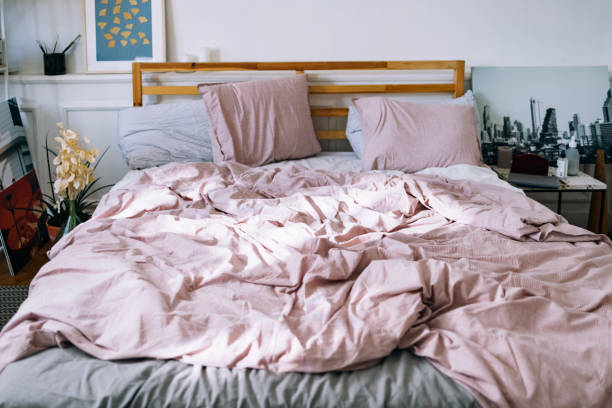4 Things You Need To Know About Bed Sheets

Do you feel tired and irritable in the mornings instead of refreshed? The problem could usually arise from bed sheets and pillowcases. Your mattress, health, environmental noise, diet, daily activities, and many other factors can all affect the quality of your slumber. But it could take time to reevaluate your bedding if you’re having trouble falling asleep and staying asleep or not waking up feeling refreshed.
Count of Threads
A high thread count is not always indicative of a high-quality sheet. Thread count refers to the vertical and horizontal threads per square inch of fabric. Fabrics with a thread count higher than the 400–500 range likely had their threads and fabric structure altered to inflate the thread count artificially. While a higher thread count indicates more fibers per square inch, in practice, some higher-thread bedding quality is much lower than that of lower-thread-count options.
Options in Fabrics
The best sheets for the summer may differ from the best ones for the winter because some materials sleep “cooler” than others. You may overheat at night if you sleep in a synthetic fabric that retains heat. This can cause you to have an unsatisfying night’s sleep full of tossing and turning. Using high-quality cotton bed sheets allows you to regulate your body temperature better while you sleep, making for a more restful night’s sleep. Sheets made from high-quality cotton-like Pima or Egyptian, can help you stay comfortably cool even on the hottest summer nights. There is a wide range of methods in which cotton bedding is completed to increase cosiness. Cotton with a sateen texture is exceptionally velvety and smooth to the touch. Those who tend to get too hot throughout the night may appreciate the benefits of moisture-wicking cotton. In addition, the colour scheme of your bedroom may affect your quality of rest. Bedding colours like white, cream, grey, blue, and purple are commonly associated with creating calming and beautiful bedrooms. In the end, each person has their idea of what makes for the cosiest linens.
Upkeep of Bedding
Bedding should be washed at least twice before use to eliminate dust, residue from fabric treatments, and any starch or stiffening agents used to make the packing look nice. Also, while washing your sheets, be wary of the detergent you use. Laundry detergent sometimes contains synthetic fragrances and colours, which might irritate anyone sensitive to these substances. These scented or coloured soap products should not be used on bed linens because they can cause skin and respiratory irritation and disrupt sleep. Most individuals benefit from washing their linens once every 7–10 days. To have a good night’s rest, you should sleep on clean sheets as often as possible.
Assorted Other Factors
Where do you call home, hot summers or cold winters? Have you considered switching your sheets with the seasons to take advantage of the best material for warm or cold nights? For optimal warmth or coolness, depending on the season, many people sleep on soft jersey or flannel sheets in the winter and cool cotton sheets in the summer. Sheet sets should be replaced every 18 to 24 months as well. Thin patches, fabric nubbiness, and general wear can result from repeated washings and use, making your sheets unpleasant to sleep on. Instead of buying entirely new sheets if you don’t have the money for them, try buying new pillowcases to update and improve your current set.
Recent research by Harvard Health found that at least 75% of adults had sleep problems at least a few times each week. Examine your bedding after you’ve checked your nutrition, health, and the general ambience of your bedroom. Investing in new or updated bed linens is a simple method to create a tranquil, comfortable, and luxurious environment in which to sleep.





